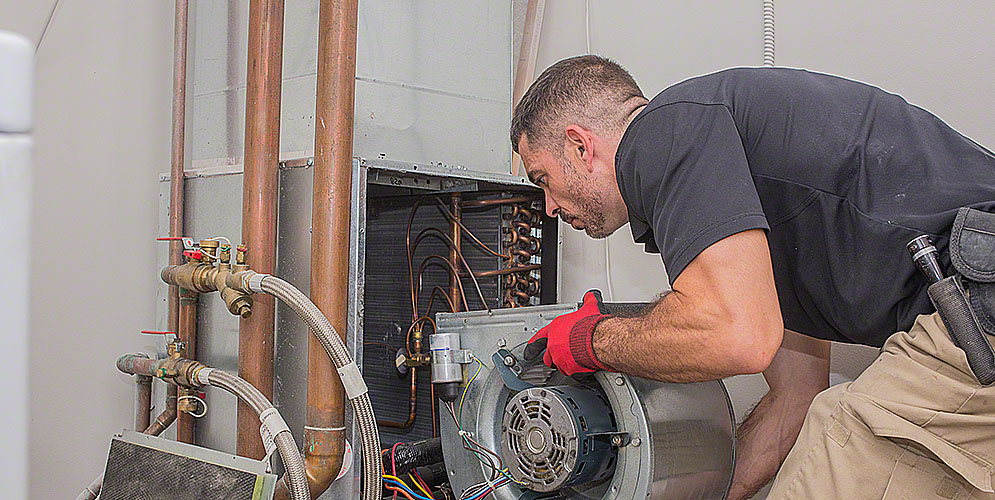
HVAC Design for High-Rise Buildings
Designing HVAC systems for high-rise buildings presents a distinct set of challenges and considerations compared to low-rise structures. From vertical airflow distribution to load balancing, every aspect of HVAC design must be carefully tailored to meet the specific needs of these towering structures. As air conditioner repair services can attest, addressing these challenges requires a thorough understanding of both the building’s architecture and the principles of HVAC engineering.
Vertical Airflow Distribution
One of the primary challenges in HVAC design for high-rise buildings is achieving uniform comfort throughout the vertical space. Unlike low-rise buildings where horizontal airflow distribution suffices, high-rise structures require vertical airflow systems to deliver conditioned air effectively to all floors.
Engineers must carefully design ductwork layouts, fan configurations, and airflow controls to overcome the effects of gravity and pressure differentials, ensuring consistent temperature and humidity levels on each floor. HVAC must account for factors such as stack effect and air stratification to optimize system performance and energy efficiency.
Load Balancing
High-rise buildings often feature diverse occupancy patterns and usage profiles across different floors, leading to varied heating and cooling demands. HVAC design must account for these differences in load distribution to ensure optimal system performance and energy efficiency.
Engineers may employ zoning systems, variable air volume (VAV) controls, and thermal storage solutions to dynamically adjust airflow and temperature levels based on occupancy patterns and external conditions. By implementing load balancing strategies, commercial HVAC companies can optimize system operation and minimize energy consumption while maintaining occupant comfort levels.
Addressing Space Constraints
Space constraints pose another significant challenge in HVAC design for high-rise buildings, where mechanical rooms are limited in size and accessibility. Engineers must select compact equipment and innovative solutions that maximize space utilization without compromising system performance or maintainability. This may involve the use of modular HVAC units, ductless air conditioners, and high-efficiency heat pumps that offer flexibility in installation and operation. By prioritizing space-efficient design solutions, air conditioner repair services can minimize construction costs and streamline ongoing maintenance and repairs in high-rise buildings.
Vertical Transportation
Coordinating HVAC infrastructure with vertical transportation systems such as elevators presents unique logistical challenges in high-rise buildings. Mechanical shafts and risers must be strategically positioned to minimize interference with elevator shafts and ensure efficient airflow distribution. Engineers must also consider the impact of elevator heat gain and ventilation requirements on HVAC design, implementing measures to mitigate overheating and maintain indoor air quality. By coordinating HVAC and elevator systems effectively, commercial HVAC companies can optimize building performance and enhance occupant comfort and safety.
Future Trends
Looking ahead, advancements in HVAC technology continue to reshape the landscape of high-rise building design. From integrated building automation systems to sustainable energy solutions, the future of high-rise HVAC design holds promise for greater efficiency, comfort, and resilience. Engineers and commercial HVAC services Ronkonkoma are exploring innovative approaches such as chilled beam systems, radiant heating and cooling, and demand-controlled ventilation to push the boundaries of performance and sustainability in high-rise buildings. As the industry evolves, these advancements will play a crucial role in shaping the skyline of tomorrow.
Energy Efficiency in High-Rise HVAC Systems
Energy efficiency is a paramount concern in high-rise HVAC design, as the scale and complexity of these systems can result in significant energy consumption. This section would explore strategies for optimizing energy efficiency in high-rise HVAC systems, including the use of high-efficiency equipment, advanced control systems, and integrated building management solutions. Engineers must balance the need for occupant comfort with the imperative to minimize energy consumption and environmental impact. By prioritizing energy-efficient design principles, such as passive solar heating, natural ventilation, and heat recovery systems, HVAC professionals can reduce operating costs, mitigate carbon emissions, and promote sustainability in high-rise buildings.
Resilience and Redundancy: Ensuring Reliability in High-Rise HVAC Systems
High-rise buildings are often subject to external threats such as extreme weather events, power outages, and equipment failures, highlighting the importance of resilience and redundancy in HVAC design. This section would discuss strategies for enhancing the reliability and resilience of high-rise HVAC systems, including redundant equipment configurations, backup power systems, and robust maintenance protocols. Engineers must anticipate potential failure scenarios and implement measures to mitigate their impact on occupant comfort and safety. By prioritizing resilience in HVAC design, air conditioner repair services and commercial HVAC companies can minimize downtime, maximize system uptime, and ensure continuity of operation in the face of unforeseen challenges.
Occupant Comfort and Health
Occupant comfort and health are paramount considerations in high-rise HVAC design, as occupants spend the majority of their time indoors. This section would delve into the importance of maintaining high indoor air quality and thermal comfort levels to promote occupant well-being and productivity. Engineers must design HVAC systems that effectively remove indoor pollutants, regulate humidity levels, and provide adequate ventilation to ensure a healthy indoor environment.
Attention must be paid to thermal comfort parameters such as temperature and air velocity to prevent discomfort and fatigue among occupants. By prioritizing occupant comfort and health in HVAC design, commercial HVAC companies can create spaces that enhance quality of life and support overall well-being in high-rise buildings.
Integration with Building Envelope and Architecture
High-rise HVAC systems must seamlessly integrate with the building envelope and architectural design to preserve aesthetic integrity and functionality. This section would explore strategies for harmonizing HVAC infrastructure with design aesthetics while optimizing system performance and efficiency. Engineers must collaborate closely with architects and designers to conceal ductwork, mechanical equipment, and ventilation openings within the building’s structure without compromising airflow or accessibility.
Innovative design solutions, such as vertical chases, concealed air distribution systems, and modular equipment enclosures, can enhance visual appeal while minimizing visual clutter. By integrating HVAC systems with building envelope and architecture, air conditioner repair services and commercial HVAC companies can create high-rise environments that are both visually striking and functionally efficient.
Conclusion
HVAC design for high-rise buildings requires careful consideration of vertical airflow distribution, load balancing, space constraints, vertical transportation coordination, and future technological advancements. You see, HVAC and air conditioners can be quite complex. That is why they need regular maintenance and inspection. Also, it is not possible for a laymen to fix issues with HVAC on their own. Rather, they want someone who is expert and adept at fixing all the issues that can happen to ACs.
By addressing these key considerations, air conditioner repair services Huntington and commercial HVAC companies can ensure optimal system performance, energy efficiency, and occupant comfort in the towering structures that define our urban landscapes. As high-rise buildings continue to rise higher and higher, the role of HVAC engineering in shaping our built environment becomes increasingly critical and impactful.
